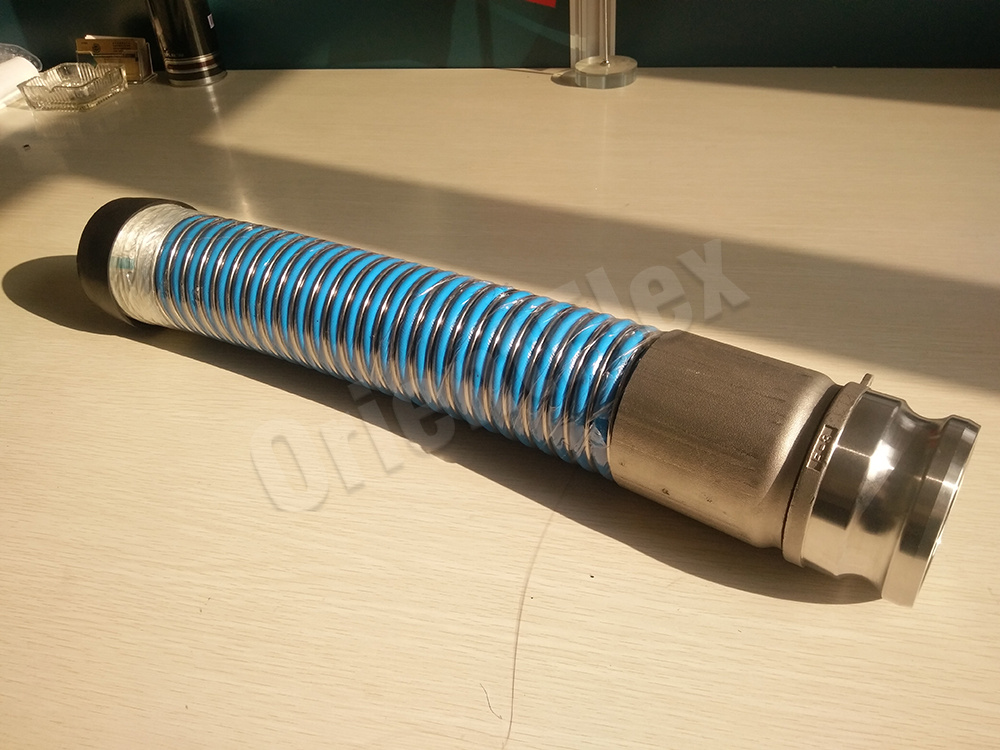Before the topic, we should briefly know what is a composite hose.
Composite hose appeared in the 1960s. It combined the advantages of metal hose and rubber hose, with beautiful appearance, it became popular since then. Here we introduce the hose from the following aspects.
1. Structure
The composite hose has multiple layers including PTFE or inner tube, inner and outer steel wire or galvanized wire, multiple polypropylene layers, reinforcement layers and aging resistant cover.
2. Characteristics
The composite hose is flexible, light in weight, easy to transfer and operate. It is resistant to chemical, acid, alkali and corrosion, low and high temperature.
3. Application
Composite hose is used to transfer gasoline, fuel, petroleum, lubricant, acid, alkali, sulfuric acid, nitric acid, chemical solvent and other high temperature, flammable and combustible, corroded and polluted air and liquid.

Compared with metal and rubber hose, the composite hose has many advantages.
1. Flexibility and light in weight
In the same operation conditions, the composite hose is 40% lighter than the rubber hose with same length and size. Besides, the bending radius is just 1/3 of rubber hose, which make the composite hose suitable for load and unload applications like tank truck and oil tank. It can be also used in narrow places with flexibility, which is can’t be reached for other hoses.
Composite hose has good performance in positive and negative pressure. The working pressure could be 1-4 MPa and it resists negative pressure up to 0.1 MPa. The pressure resistance is better than the rubber hose in the same condition because rubber hose is tough and can’t bear pressure at bending. If in extreme bending conditions, the rubber hose may be twist and then cause block. While the composite hose can work normally in extreme bending conditions and always remains its shape and will never twist and block, which is the unique characteristic of composite hose.
2. Better acid and alkali resistance
Because being made from synthetic polypropylene fibre, the resistance to aromatic and chemical is better than rubber and metal hoses. For some special acid and alkali, rubber and metal hose can deal with, but composite hose can. Besides, composite hose can bear the temperature from -60℃ to 220℃.
3. Anti static
When flow in the hose, the liquid will cause static because of the pressure, flow rate and crush with the hose. It will cause fire if the static exists. The composite has reliable static conduction system and you just need a steel wire and connect one side to the hose and the other side to the ground. Then the static will be conducted and it will be safe.

Application
Composite hose can be used in oil exploitation, tank truck, oil transfer, chemical and many other applications. It can be also used as connector in oil transfer equipment and system and be used to transfer chemicals that require high transport condition. Besides, it can be used to extract water, sugar and wine.
In a world, composite hose combined all the advantages of rubber hose and metal hose. So it is better than them. Do you get it?
OrientFlex has been in hose producing for more than 15 years. We supply many kinds of composite hose like multi-purpose composite hose, low temperature resistant composite hose, chemical transfer composite hose and many other hoses with the best quality and service.
Our hoses have been exported to more than 130 countries and we know your market well. If you need composite hose or have some questions about composite hose, welcome to consult us. We are glad to cooperate with all of partners in the world and achieve win-win.